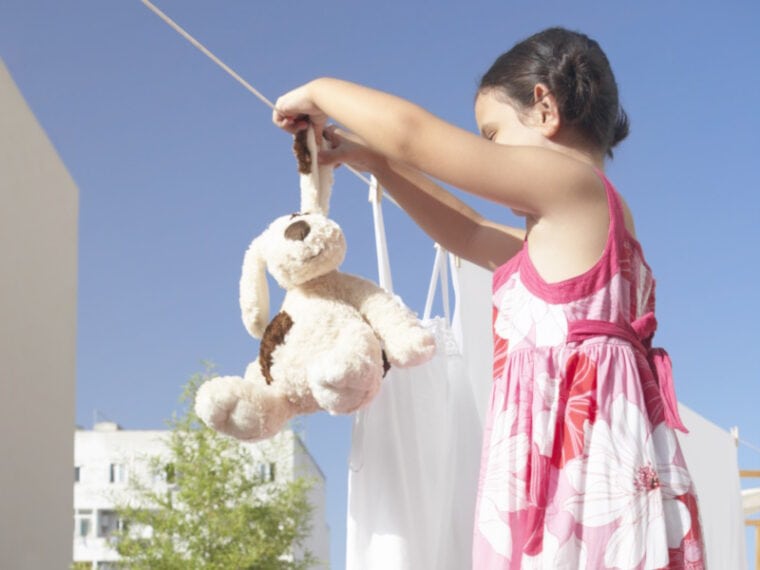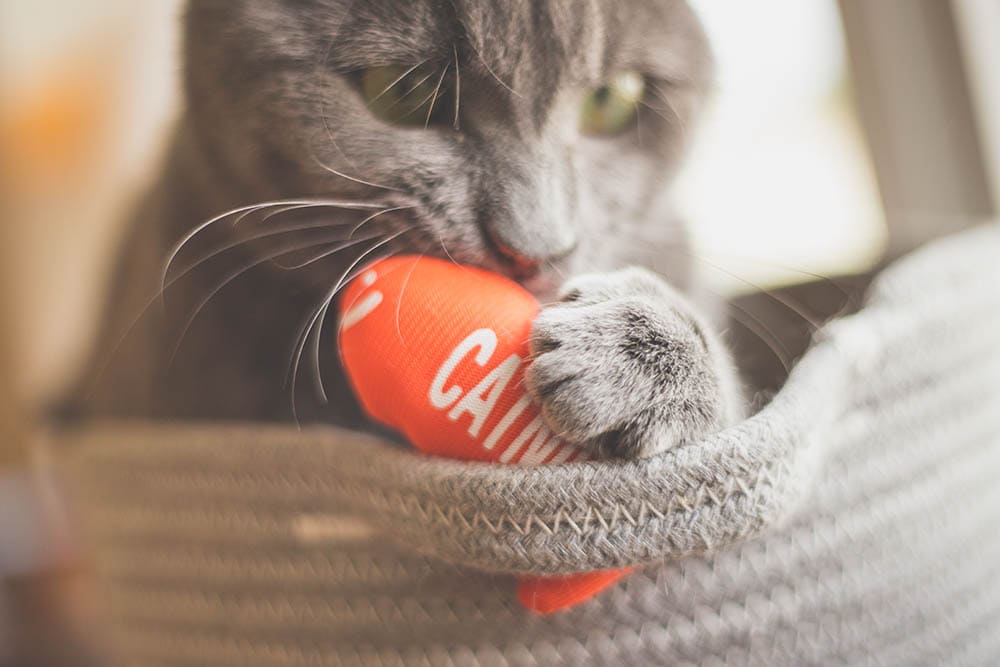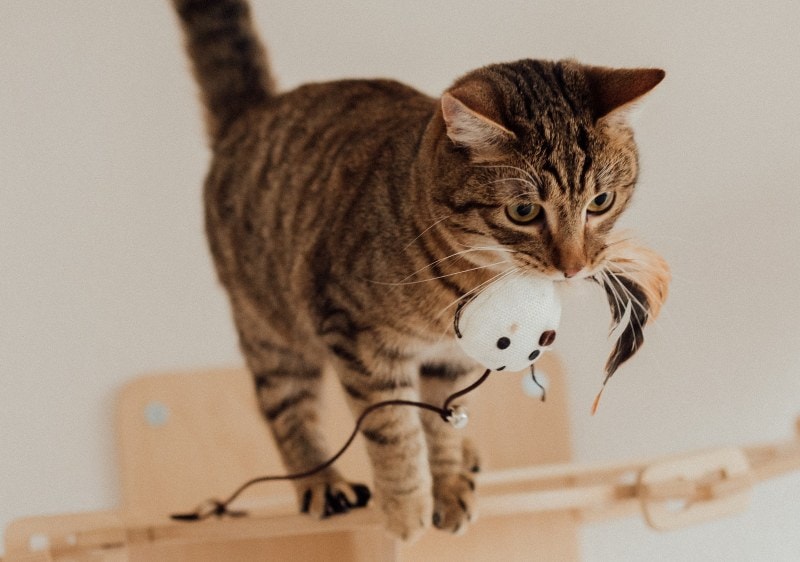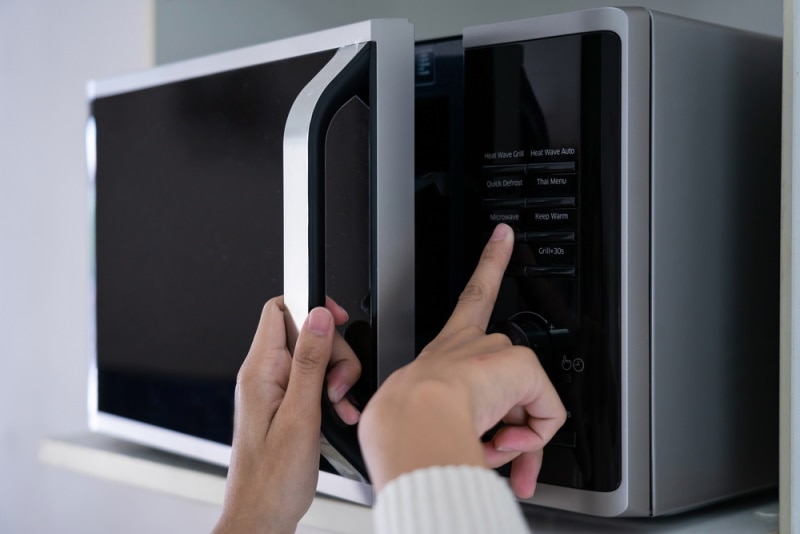
Cats love toys and will gleefully play with their favorite for hours on end. The bad news is that their toys can become dirty, germ-filled disaster areas after days or weeks of heavy play. Even worse, a dirty cat toy can attract bugs, smell awful, and, when it’s too dirty, will be completely ignored by your cat. Cats, as you probably know, are neat freaks.
To help you and your cat get more enjoyment out of every toy, we’ve collected a list of 12 tips on how to clean cat toys below. We’ve got everything from the right type of soap to products that will disinfect them and bring back their original look and feel. Read on to discover all these top tips and keep your cat happily playing with clean, safe, spit-free toys!
The 12 Tips on How to Clean Cat Toys
1. Wash Small Delicate Cat Toys by Hand
Cat toys are typically much smaller than dog toys and, for that reason, don’t do well when washed in a washing machine. That’s especially true for cat toys made from fabric, feathers, cloth, or sisal rope, which tend to fall apart even on your washer’s “gentle” setting.
Instead, wash any fabric, rope, or fragile cat toys by hand with hot, soapy water. It takes a little bit more time, but the result will be a cat toy that lasts much longer.

2. Use a Garment Bag To Wash Cat Toys in the Washer
If you decide to use your washing machine to wash your cat’s toys, placing them in a garment bag is a great idea. Not only will the garment bag keep the toys and your clothes separate, but it will also reduce the damage your washer can do to the toys while they wash.
If you don’t have a garment bag, you can use a small pillowcase instead. Once you’ve placed the cat toys inside, you can tie the opening closed or use a zip tie to close it, so they don’t fall out.
3. Never Use a Scrubber on Your Cat’s Toys
Most cat toys won’t get filthy from mud and other gunk unless your pet is an outdoor cat. However, they might get matted with fur and spit, get stains from food, and become dirty in other ways. When they do, avoid using a scrubber sponge to clean them. A scrubber sponge can make hundreds (if not thousands) of tiny scratches on a cat toy. Those scratches won’t be a direct problem for your cat but, in time, can pick up and harbor germs, bacteria, and viruses that stick inside the scratches and grow. Instead, use a sponge or washcloth, and don’t worry if you can’t remove a stain completely. (Most cats won’t care.)

4. Don’t Wash Cat Toys in the Dishwasher
If you think your washing machine is a bit rough on cat toys, the typical dishwasher is like trying to clean them in a hurricane! Remember, dishwashers are made to take off all sorts of dried, caked, and burnt-on foods and have very powerful jets.
The jets can easily destroy some cat toys, especially those with feathers and fur. As we mentioned earlier, washing smaller, more delicate cat toys by hand is better. Like most cat toys, hot, soapy water and a sponge or cloth are best.
5. Different Cat Toys Require Different Cleaning Schedules
Unless your cat (or you) is super picky about the cleanliness of its toys, there’s no need to clean most of them every day. Yes, you should keep an eye on their toys and make sure they don’t get overly gross or nasty. However, for catnip and other fragile toys, washing them only when necessary is best so they don’t fall apart.
The same can be said for toys with feathers and other delicate parts. You should probably wash plastic and sturdier toys once a week if your cat plays with them frequently. If it’s a toy your cat mostly ignores, washing once a month will likely suffice.

6. Wiping with Anti-Bacterial Spray Is Often as Good as Washing Cat Toys
Cat toys that don’t have a porous surface can often be cleaned simply by using a cloth that’s been sprayed with anti-bacterial spray. Let’s face it; most cats aren’t going to be rolling around on the mud (or in their own poop like a dog) with their toys.
If all they’re doing is batting it around on the floor, wiping their toy with an anti-bacterial spray would be just fine.
Cleaning your pet's toys and accessories when they are not machine or dishwasher safe can be tricky. Luckily, we found two products that were created to do just that. Hepper Wash Wipes are durable and are saturated in a gentle yet effective formula, created to clean anything from paws to toys. Hepper Advanced Bio-Enzyme Pet Stain & Odor Eliminator Spray was made for tougher messes and can remove even the most stubborn stains and odors.
 |
 |
|
|---|---|---|
| Hepper Pet Wash Wipes | Hepper Advanced Bio-Enzyme Pet Stain & Odor Eliminator Spray | |
| Pet-friendly formula |
Pet-friendly formula:
|
Pet-friendly formula:
|
| Cleans & refreshes pets sensitive areas |
Cleans & refreshes pets sensitive areas:
|
Cleans & refreshes pets sensitive areas:
|
| Light, fresh scent |
Light, fresh scent :
|
Light, fresh scent :
|
| Works on tough stains & messes |
Works on tough stains & messes:
|
Works on tough stains & messes:
|
| Odor control |
Odor control:
|
Odor control:
|
At Pet Keen, we've admired Hepper for many years, and decided to take a controlling ownership interest so that we could benefit from the outstanding designs of this cool cat company!
7. Remove Catnip Before Cleaning a Catnip Cat Toy
Toys that allow you to place catnip inside should have the catnip removed before cleaning. Once removed, clean the toy by hand with hot, soapy water and let it dry thoroughly before placing the catnip back inside.

8. Don’t Dry Cat Toys in the Dryer
Even on low settings, the average dryer gets too hot for plastic cat toys and can damage toys made from other materials. The last thing you want is a plastic cat toy to melt in your dryer. The best thing to do is to let washed cat toys air dry and, if possible, do it in direct sunlight to kill any mold spores that might be present.
Be sure to place the toys where your cat can’t reach them, so they don’t start playing with them while they’re still wet.
9. Never Use Harsh Chemicals or Detergents To Wash Cat Toys
Cats, like dogs, play with their toys using their mouth and paws. For this reason, you mustn’t use harsh chemicals or detergents to wash your cat’s toys, as most will leave some type of residue that could cause a world of hurt to your pussycat. Lysol spray and laundry detergents are not recommended for cleaning toys. Speaking of which…

10. Don’t Use Scented Laundry Detergents To Clean Cat Toys
The problem with scented laundry detergents is that they add extra (and usually harsh) chemicals to get that “fresh” scent many people love. As we discussed earlier, those chemicals can be unhealthy for your cat but also cause another problem you might not have thought about; a smell your cat won’t enjoy.
Cats aren’t big fans of strong scents, and they also like it when their toys smell more like them, you, or their cat friends (if you have more than one cat). In effect, the scent left by your laundry detergent might be the main reason your cat gives up playing with a particular toy.
11. Use the Microwave To Sanitize Your Cat’s Rope Toys
This tip comes from the maven of housekeeping herself, Martha Stewart. Ms. Stewart says you can place rope toys in the microwave for a minute (or slightly longer) to sterilize them. She suggests making the rope toy(s) damp first, which the microwave will likely steam off as it works. After microwaving, your cat’s toy will probably be extremely hot, so giving it time to cool off first is a must.

12. Know When To Toss Your Cat’s Toys
It’s not always easy to throw your cat’s beloved toy in the garbage, but in some cases, it’s the best choice. A fabric toy that’s losing its stuffing is a great example since the stuffing can present a choking hazard for your cat. You should probably toss a plastic toy with all scratches and scrapes on it, so your cat won’t get sick from the germs and bacteria it can hold.
Feathers falling off of their catnip toy is usually a sign they need to be replaced or a plastic toy that’s cracking at the seams. It’s best to err on the side of caution with cat toys so that they don’t turn into something that can hurt your cat or make them sick.
Final Thoughts
Cleaning your cat’s favorite toys isn’t difficult and usually won’t take a lot of time and effort. That said, you should do it relatively often so their toys stay clean and your cat stays healthy. Most cat toys can be easily and quickly cleaned with products and tools you already own, so there’s no need to make a run to your local big-box pet store.
On the other hand, if you want an excuse to go and buy your kitty a new toy, most pet stores have cat toy cleaning products you can purchase at the same time. Just be aware that regular bar soap and water will work like a charm for the vast majority of cat toys.
If you have a cat or two in your home and want to keep them healthy and happy, ensuring their cat toys are clean is essential. It will give you peace of mind that you’re doing your best to keep your curious cats safe and sound.
Featured Image Credit: MJTH, Shutterstock





